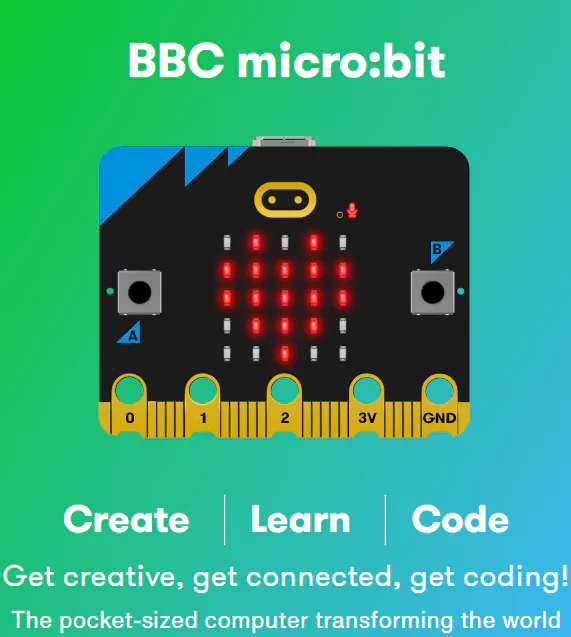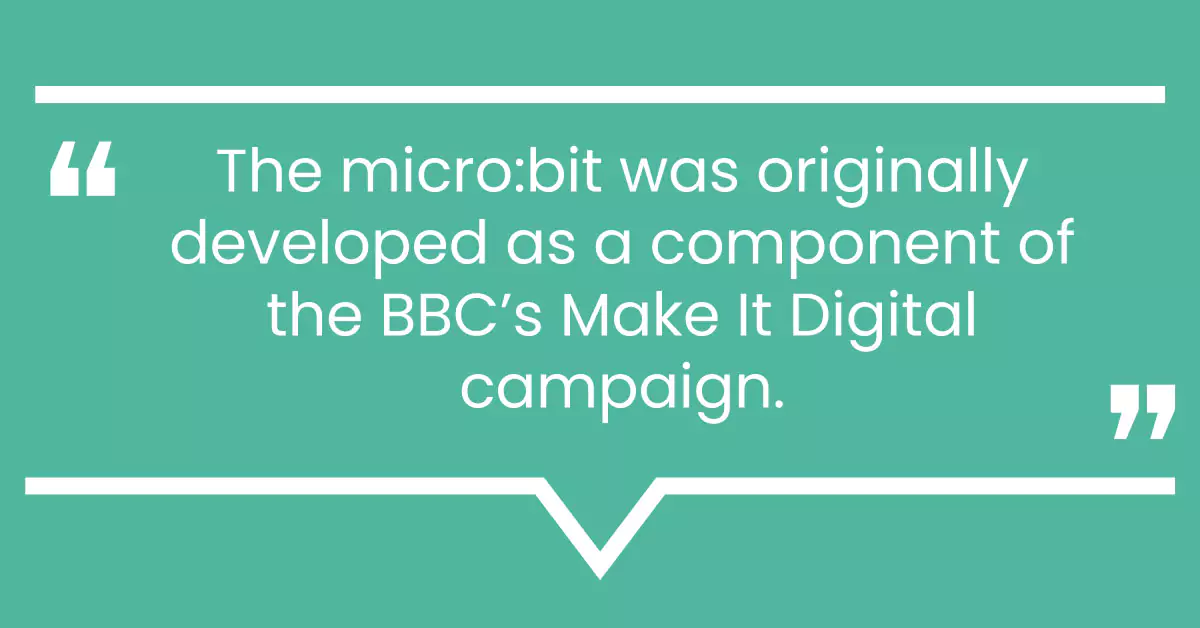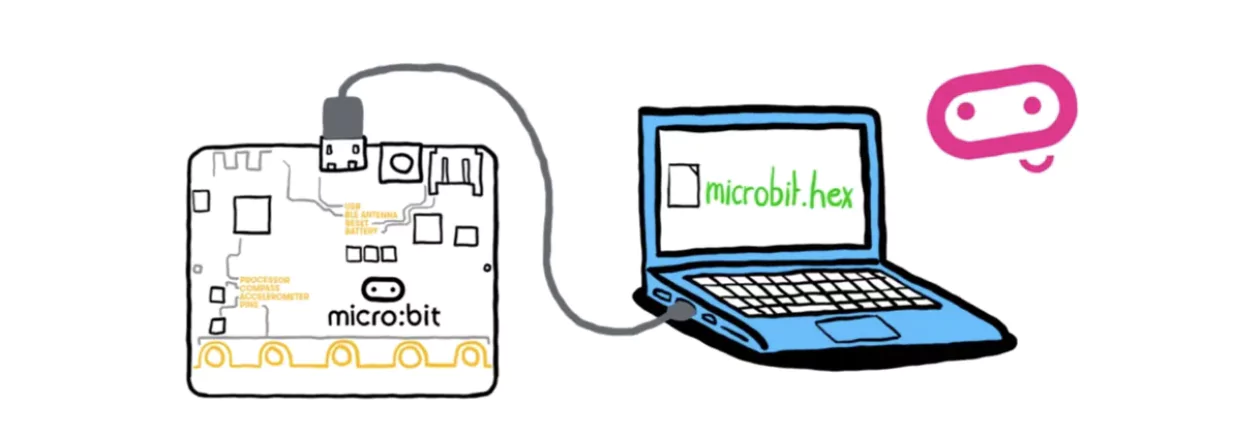
Update: This article was last updated on 7th January 2025 to reflect the accuracy and up-to-date information on the page.
Have you ever heard of micro:bit? micro:bit, also known as BBC Micro Bit, is a small computer, small enough to fit in your pocket, and you can use it to create all sorts of digital projects. So, what are micro bits? They are versatile tools that allow you to program, customize, and control your micro:bit from any location!
One million UK school kids have been handed a mini piece of technology, just ahead of Easter.
You would be surprised to learn that over 25 million youngsters from more than 60 countries have benefited from learning with the micro:bit so far. Not just for children, the micro:bit is ideal for teachers who are just starting out or for specialist teachers who want to delve deeper into physical computing.
In this blog, we’ll go over the basics of micro: bit and what you can do with it.
First of all, what is micro:bit?
It’s a tiny computer that’s only a few centimeters long and wide. But don’t let its size fool you – it’s a powerful little device that can do a lot of things, and it is designed to inspire every child to create their best digital future.
Recommended Reading: 100TH DAY OF SCHOOL ACTIVITIES & IDEAS

The micro:bit was developed as part of the BBC’s Make It Digital campaign, launched in 2014. The initiative was supported by 29 proficient partners, who provided resources and knowledge to help bring the micro:bit to life.
In 2016, the organisation Computing at School delivered micro:bits to pupils in over 5,000 schools and hundreds of homeschools. The same year, the Micro:bit Educational Foundation, a not-for-profit organisation independent of the BBC, was launched and set up to take forward the work of the micro:bit project around the world. Many students and teachers have then undertaken research on the best micro bit projects that can harness the full use of this resource for learning and creativity.
So, what can you do with micro:bit?

Well, the possibilities are almost endless. You can use it to make games, robots, wearable devices, and more.
The micro: bit demonstrates how software and hardware work together. It comprises an LED display, buttons, sensors, and multiple input/output functionalities that, when programmed, enable it to interact with its environment and its user.
If you are examining the micro-bit for beginners, you can then use its functions to make projects even better. For instance, you can add a button which will control the project, text and graphics for display on the LED screen and sensors that have the ability of detecting motion, light, as well as temperatures.
Here are More Things you can do with Your Micro:Bit
Creative Projects
| Category | Description |
|---|---|
| Fashion | Digital watch or even a brooch showing off all your unique designs or messages you have. |
| Fitness | Make a DIY step counter like 'Fitbit' or use micro:bit for balancing games in an obstacle course. |
| Games | Develop classic phone games ('Snake') or invent your own. Also, use micro:bit as a scoreboard or timer for different games. |
| Music | Connect a micro:bit to your phone for music control, compose tunes, or turn a banana into a music keyboard!! |
| Cooking | Build a digital egg timer or attach a micro:bit to a thermometer for the perfect temperature in your Mary Berry Victoria Sponge.. |
| Home & Garden | Attach a soil sensor connected to micro:bit; it now smiles when your plant is happy or frowns when it needs a drink.. |
Is Microbit easy to use?
Micro:bit is an easy-to-use device. Anyone, from beginners to professional coders, can easily understand it and begin developing simple, fun projects. This includes programming languages using MakeCode, Python, or Scratch– easy to use, and designed for anyone learning to code, along with a ton of exciting ways to make the most out of micro:bit.
Even if you are not a seasoned programmer, you can still begin developing projects with micro:bit. The nature of micro:bit projects is very beginner-friendly and accessible to any person interested in learning and experimenting with coding and electronics.
How to use micro:bit?
To get started, you’ll need a few things:
- A micro:bit
- Battery pack with 2 AAA batteries
- A USB cable
- A computer, phone, or tablet with internet access to load the Microsoft MakeCode or Python code editors
- If you’re using a computer, a USB lead to connect your micro:bit
- For building and making projects with your micro:bit, some extra items that are great to have include headphones, crocodile clip leads, and conductive materials such as aluminum foil and paper clips.
- You’ll also need to go to the micro: bit website (microbit.org) to download some software that you’ll use to program the micro: bit.
- Once you have everything set up, you can start programming your micro:bit.
Recommended Reading: BITCOIN – WHAT DO KIDS NEED TO KNOW?
Programming is just a fancy word for telling the computer what to do. With micro:bit, you can use a programming language called Blockly or a text-based coding called Python.
Blockly is a visual language that uses blocks to represent code, while Python is a text-based language that uses words and symbols to represent code.
For beginners, Blockly might be the best option because it is easy to use and you don’t need to worry about typing out all the code. You can just drag and drop the blocks to create your program. If you’re feeling more confident, you can try Python, which is a more powerful language that can do a lot of things.
So, what kind of programs can you make with micro:bit?
Here are a few examples:
- Game: You can create a simple game like “Rock, Paper, Scissors” or “Guess the Number” using the buttons on the micro:bit.
- A weather station: You can use the temperature and light sensors to create a device that tells you the temperature and weather conditions.
- A step counter: You can use the motion sensor to create a device that counts your steps.
- A robot: You can create a robot that moves around and does different things using the buttons and sensors.
If you’re curious and want to dig deeper into the technology, there’s much you can do with the micro:bit. The best thing is that you can come up with whatever project you like based on your imagination and creativity. It is basically a fun little powerful computer you can use to make all kinds of projects.
Moonpreneur is on a mission to disrupt traditional education and future-proof the next generation with holistic learning solutions. Its Innovator Program is building tomorrow’s workforce by training students in AI/ML, Robotics, Coding, IoT, and Apps, enabling entrepreneurship through experiential learning.


























Is micro:bit like Raspberry Pi?
Raspberry Pi is a basic DIY computer with its own operating system and advanced capabilities whereas micro:bit is more like a circuit board used for experiments and games and is excellent for teaching absolute beginners the building blocks of coding.